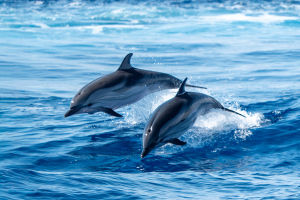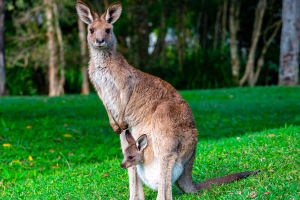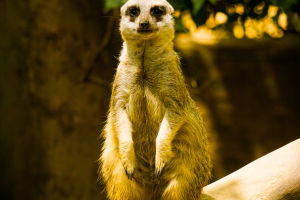Have you ever watched a kangaroo hop across the Australian outback and wondered how it manages such graceful leaps? Or why it seems awkward when they try to move backward?
There's a hidden story behind these iconic marsupials' movement—one that centers on their powerful tails and the amazing structure of their bodies.
Kangaroos don't just use their legs to get around. Their tails act almost like a third leg, playing a vital role in balance, movement, and even resting.
At the same time, their famous pouch hides a marvel of nature, perfectly designed for raising their young in a harsh environment. Let's explore the fascinating mechanics behind kangaroo locomotion and the secrets of their pouch.
1. The Tail That Walks With Them
A muscular, flexible third leg
Unlike most animals, a kangaroo's tail isn't just for balance or expression—it actually supports its body weight and helps propel movement. Scientists describe this as a kind of "pentapedal" locomotion, meaning kangaroos effectively walk on five limbs: two powerful legs, two smaller arms, and the tail.
Here's how it works when a kangaroo moves slowly:
• The kangaroo plants its front legs and tail firmly on the ground.
• The tail acts as a strong support, bearing significant weight.
• Using this tripod-like base, the kangaroo swings its legs forward.
This means the tail is not just an afterthought but a major player in forward motion. Studies using force sensors show the tail can support up to 30-40% of the animal's body weight during slow walking. This unique "third leg" function is what makes their movement efficient on land where hopping isn't practical.
2. Why Kangaroos Can't Walk Backward
Body design limits backward steps
If you've ever tried to get a kangaroo to back up, you'll notice it's almost impossible. Their large muscular tail and leg structure create a physical barrier that prevents backward walking.
Here's why:
• The tail is so thick and strong that it hits the ground first when they try to move backward.
• Their long, powerful hind legs are designed for forward propulsion, not backward stepping.
• Their hips and knees don't flex easily in reverse.
In fact, this limitation is so characteristic that kangaroos are one of the few large animals that literally cannot take a step backward. This trait even inspired the "No backward steps" motto of the Australian.
3. The Pouch: Nature's Nursery
More than a pocket—an adaptable baby home
Beyond locomotion, kangaroos are famous for their pouch—technically called the marsupium. But the pouch is not just a simple pocket; it's a highly specialized, self-cleaning, temperature-regulating nursery.
Inside the pouch:
• The skin secretes antibacterial fluids to keep infections away.
• Muscles control the pouch opening, so it can close tightly against dirt or predators.
• The inner lining adjusts moisture and temperature to match the needs of the joey (baby kangaroo).
Joeys stay in the pouch for up to eight months, continuing to develop after birth. During this time, the mother can produce different types of milk to match the joey's growth stages—a unique biological feature allowing simultaneous care for joeys at different ages.
4. Energy Efficiency and Survival
How tail and hopping save energy in the wild
Kangaroo tails and hopping aren't just fascinating biomechanics—they're key to survival. Hopping is an energy-efficient way to cover large distances, especially in arid environments where food and water are scattered.
The tail's role in slow movement lets kangaroos conserve energy when they're grazing or moving short distances. Using their tail as a "third leg" reduces muscular effort and improves balance, making their movement smoother and less tiring.
According to Dr. Janneke Schwaner, a biomechanics specialist:
"Elastic energy storage in tendons during hopping significantly reduces muscular effort compared to running. This spring-like mechanism allows kangaroos to conserve metabolic energy—a key evolutionary adaptation enabling them to traverse vast, resource-scarce landscapes efficiently."
Kangaroos are much more than just hopping animals. Their tails give them a unique walking style, their bodies are perfectly adapted to prevent backward movement, and their pouch provides a safe, nurturing space for their young to grow. This intricate design of body and behavior highlights how nature engineers survival with astonishing precision.
So next time you watch a kangaroo, notice how that tail isn't just a tail—it's a strong, supportive third leg helping them walk, balance, and live well in a challenging world. Have you ever seen a kangaroo move slowly using its tail? What surprised you most about their unique way of moving?


